Big forearms are part of the power look. An instant tell of a powerful man (or woman) is a firm, all-consuming handshake. Not to mention a stronger grip and bigger forearms will mean you can handle heavier loads when lifting and therefore, pack on more muscle all over your body.
But before we dive into the exercises and workouts to grow your forearms into big meaty slabs of muscle, we first must understand a little anatomy so we can effectively target the right muscles.
Table of Contents
Anatomy Of The Forearms
On the most basic level, we have muscles on the top and the bottom of our forearms. Many people don't realize that the forearms are a huge network of muscles and tendons that not only control the wrist but also the fingers.
If you place your arm in front of you with your palms down, the muscles on top are your wrist extensors.
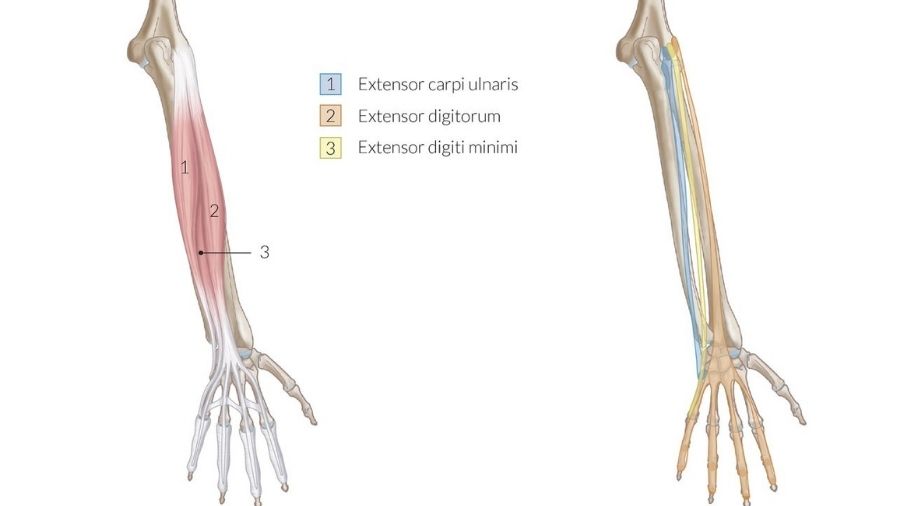
Courtesy of amboss.com
The wrist extensors straighten the fingers (i.e. opening of your hand) and curl the wrist upward (i.e. your knuckles toward your elbow). The largest muscle on the top of your forearm is the brachioradialis which is what will give your forearm the most mass.
If you turn your palms facing up, these are the wrist flexors that are located on the bottom of your forearm.
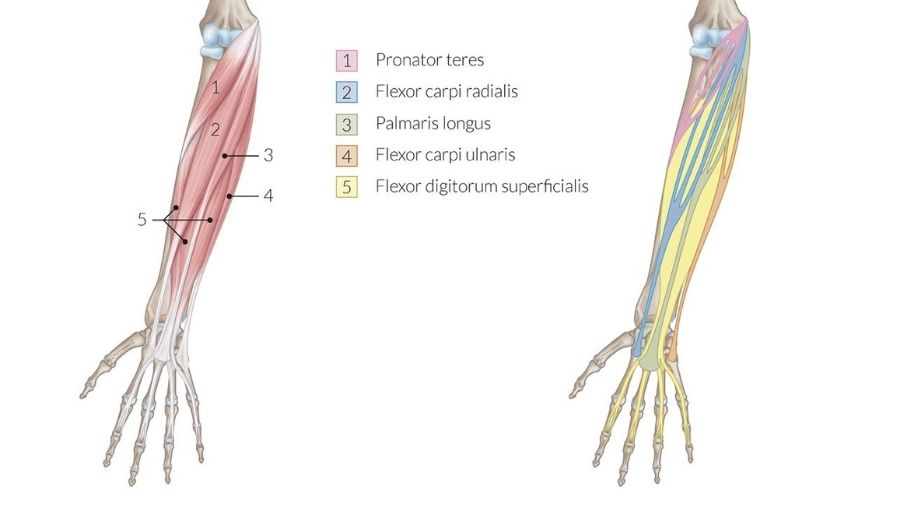
Courtesy of amboss.com
The wrist flexors curl the fingers (i.e. closing of the fist) and curl the wrist downward (i.e. palm toward your elbow).
Within these muscles, we also have forearm pronators and supinators which contribute to your overall forearm size. Both the wrist flexors and extensors will be involved in pronation and supination as well to varying degrees.
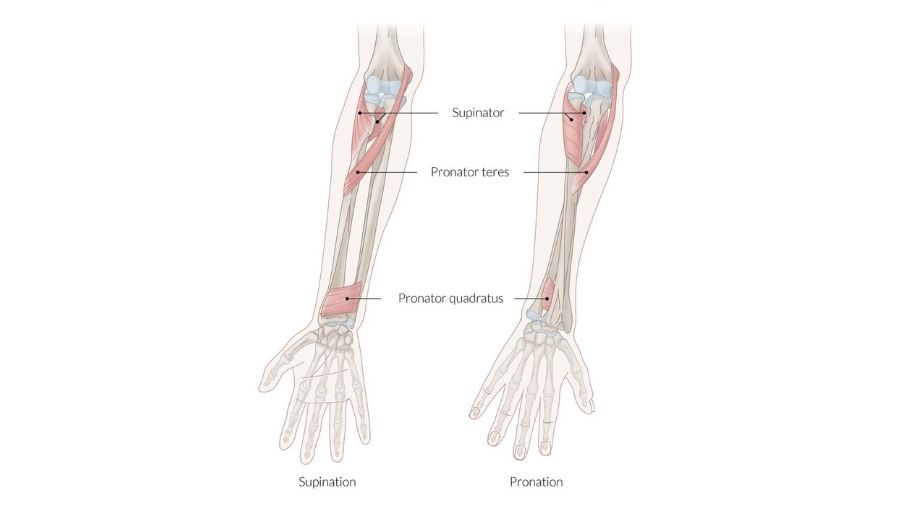
Courtesy of amboss.com
For example, the big brachioradialis muscle, while the main driver of flexing the elbow in a pronated position, is highly activated during pronation of the wrist [1]. Further, the brachioradialis acts eccentrically during supination so there is more than one way to train this muscle.
Before giving you the best exercises for massive forearms, we need to briefly cover the guidelines on how to build big forearms.
How To Build Forearm Mass
Firstly, we know that taking a muscle through a full range of motion is a key to muscle growth. It trains the muscle at long muscle lengths and maximizes mechanical tension on the muscle which is a key mechanism of hypertrophy [2,3].
That means doing various wrist flexion, extension, pronation, and supination exercises are required to load the muscles at long muscle lengths. But that’s not all. You may notice that some strength athletes have jacked forearms without doing any direct forearm work.
Two studies have shown why this may be. They found that grip strength is highly associated with the size of the forearms [4,5].
Meaning the stronger your grip, the bigger forearms you are likely to have.
Further, we can’t go past the fact that grip strength is highly important as you age. For adults over 65 years of age, grip strength is associated with mortality from all causes [6]. Meaning the weaker your grip, the greater your risk of death from causes such as cardiovascular disease. Safe to say, big forearms can save your life, literally.
Now we know that grip strength also plays a role in forearm size. We know that performing regular weight training that involves your grip enhances grip strength and therefore, may stimulate forearm growth [7].
However, when one group performs strength training with no direct forearm and grip work while another group does both, the group that trained their forearms and grip directly saw far greater improvements in forearm size [7]. Therefore, train your forearms directly to maximize forearm growth!
How Often Should You Train Your Forearms?
The typical recommendation for muscle growth is 5-25 sets per muscle group per week. However, a 2017 study found when volume is equated (120 reps per week of maximal isometric contractions), 5 x 8 reps 3 times per week and 2 x 6 reps 10 times per week result in similar strength and size gains in the forearms [12].
So, training your forearms more often may not lead to extra forearm growth. However, if you performed more volume (i.e. more than 120 reps per week), you may see even greater muscle growth since volume is such a potent hypertrophy factor.
Importantly, you need to build your tolerance to these volumes. Week one of training is not the time to blast 120+ reps when research shows you can make progress with 5 sets 3 times per week. If you are brand new to forearm and grip training, you’ll be able to get away with even less and grow.
So, here are 20 of the best exercises for packing on forearm mass like you’re Popeye after a can of spinach.
Best Exercises For Bigger Forearms
Towel Barbell Curls
The towel is the most underutilized piece of training equipment for forearm development. You can use your gym or hand towels that you already have sitting in the cupboard at home. If you don’t have any of these, they will only set you back a few dollars but return you more than that in training value.
The towel barbell curl, while not specifically targeting the brachioradialis, will light your wrist flexors on fire and strengthen your fingers like no other grip exercise. You will need two towels for this. One for each hand.
Loop each towel around the barbell where you would normally place your hands to curl. Bring both ends of the towel together and hold them together in your fist. Curl the barbell with a hammer grip. If you want a little more biceps activation, I like to try to supinate my wrists at the top. You won't get much movement but that little bit helps.
Recommended sets and reps: 2-4 sets of 8-10 reps.
Towel Pull-Ups
Keeping with the towel theme. You can also do pull-ups with towels. Because you will be supporting your bodyweight, you need some serious finger and grip strength to do these. As you would with the towel barbell curl, place the towels around a pull-up bar and hold the ends together.
Start by hanging so you know you have a secure grip. Pull yourself up like you would when performing regular pull-ups. If this is too difficult, performing towel hangs are also a great option to develop your grip and finger strength for big forearms.
Recommended sets and reps: 2-4 sets of 3-10 reps.
Towel Farmers Walk
Another exercise with the towels?! I wasn’t lying when I said they are the most underutilized piece of equipment. You can use them for more than you think! And farmers walks are no exception. These are best done with kettlebells because of the handle. Dumbbells also work but they aren’t as stable.
Place your towels through separate kettlebells and place the ends together. You want to grip the towel with your palms facing backward. Not in a hammer position like the curl. That means your thumb and index finger will be the closest to the kettlebell.
Now pick them up and walk!
Recommended sets and reps: 1-3 sets of 20-50 m.
Reverse Curl
The reverse curl is your go-to exercise to maximally stimulate the brachioradialis. The pronated position in combination with elbow flexion activates the brachioradialis to a greater extent than when supinated [1].
Most specifically, the end range from 90° up activates the brachioradialis the greatest [8]. However, this doesn’t mean to only train the end range. Use a full range of motion and if you want some extras, do some top range partials as an added intensity technique.
Use an EZ bar if possible with the reverse curl as it will feel better on your wrists compared to the barbell. Be sure to use a thumbless grip as that will maximally stimulate the wrist flexors as you’ll need to clamp your fingers down to secure the bar.
Recommended sets and reps: 2-4 sets of 8-10 reps.
Farmers Walk
The farmers walk maximizes the time under tension for your forearm muscles which is a major factor in the muscle growth equation [9]. Do you want a grip that crushes hands with forearms to match? Then don't skip on the farmers walk.
The best farmers walk equipment are farmers handles as the weight sits below the handles. You’ll be able to handle more load this way. Dumbbells and barbells are an option if you don’t have these available.
Simply pick the weights up and walk!
Recommended sets and reps: 1-3 sets of 20-50 m or failure.
Grippers
The classic grippers. Don’t get the cheap sh*t from Walmart. The gold standard is the Captains of Crush Grippers from IronMind. If you have a good strength training background, then I would advise getting the Trainer as part of your gripper warm-up and a 1.
From there, I would work up in 0.5 increments. I made the mistake of getting the 1 and 2 instead of 1.5. It’s a big, big jump. If you have abnormally large hands and a strong grip, this won’t be a problem.
Surprisingly, there is a proper technique when closing the gripper. When you don’t use this technique, closing them becomes near impossible. The video above explains it best and shows you exactly how to place the gripper in your hands.
Recommended sets and reps: 2-4 sets of 5-10 reps.
Plate Pinch
There are very few exercises that allow you to target the fingers and thumb. Considering the fingers are an important factor for your overall grip strength, it would make sense to train them! Further, you’ll thicken the tendons in your fingers and hands making them even stronger and bigger.
You can do a plate pinch with one or two hands. Both variations are great so you can do either without worrying if you are missing something special. Ideally, you want to use metal plates that have a flat smooth surface. Unless you are at a hardcore lifting gym (or you own a super legit garage gym), you may not have these plates.
You can substitute with other plates but you want to make sure you aren’t taking advantage of the ridges on the plates. It defeats the purpose of the exercise and makes it easier. With the smooth surfaces facing outward, pinch the plates together and squeeze them for time.
I recommend using two 35 or 45 lb plates for the two-hand plate much and two 10 lb plates for the one-hand plate pinch to start with.
Recommended sets and reps: 1-3 sets of 20-45 seconds.
Plate Clamp Lift
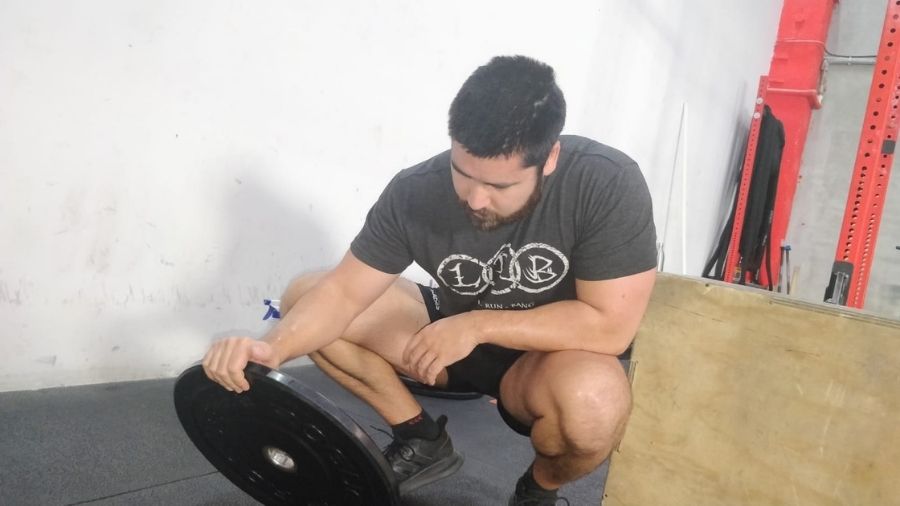

The plate pinch will heavily tax your thumb as it has a big drumstick-like muscle on your hand that is very powerful. So, what’s the solution to isolating your finger strength? It’s the plate clamp lift. This is a pretty obscure niche exercise. Nevertheless, it will turn your fingers into vicious hooks.
For this exercise, you'll need to clamp the plate between your fingers and your palm without your thumb. Start with a 10 lb plate and work from there. You only need to lift it off the floor slightly then lower it back down. Do reps like this rather than holding for time.
Recommended sets and reps: 2-4 sets of 5-10 reps.
Fat Gripz Deadlift
It is no secret. I love my Fat Gripz. I use them on almost every upper body exercise. If you have a fat bar or axle, then you don’t need these. But the majority of people don’t or train in a commercial gym so these make the perfect makeshift fat bar attachments.
But why train with a fatter bar if I’m not going to be able to lift as much weight? Firstly, specifically training with Fat Gripz increases forearm activation to a greater extent than the regular barbell [10].
Secondly, when a whole training program is performed using a fat bar, we see subjects doubling their grip strength compared to regular barbell training [11].
That’s enough for me to use them! Also, they make training fun as hell. To get the most out of Fat Gripz deadlifts, use a double overhand grip to tax your fingers and thumbs. You can use a mixed grip but it doesn’t challenge your grip to the same degree even though you can lift a lot more weight.
A quick pro-tip: turn the opening of the Fat Gripz to the top. If you face them down, the Fat Gripz can start slipping off when the weight gets heavier.
Recommended sets and reps: 2-4 sets of 1-10 reps.
Wrist Curl
You can’t go past the staples in the quest for forearm mass. The wrist curl is one of those staples. This is the only exercise that will put your wrist flexors through a full range of motion so it should never be neglected if maximizing forearm mass is your goal.
The best way to perform this exercise is to support your forearm on a bench and use a dumbbell with your palm facing up. Let your wrist extend and let the dumbbell roll to the edge of your fingers. This will ensure you’re not cutting the range of motion short.
From the extended position, flex your wrist bringing the dumbbell toward your forearm. Start light on these as you can easily injure the small muscles of the forearm if you are not conditioned to this movement.
Recommended sets and reps: 2-4 sets of 10-20 reps.
Wrist Extension
The other staple forearm movement you need so you can train your wrist extensors to create some balance. When lifting, you spend all of your time closing your hand around bars and handles. This trains the wrist flexors but often neglects the wrist extensors.
You can perform these in the exact same way as the wrist flexion except with your palm facing down. Lower your wrist into flexion and then raise your knuckles toward your elbow. To challenge your grip even further, use a thumbless grip.
Recommended sets and reps: 2-4 sets of 10-20 reps.
Thor’s Hammer
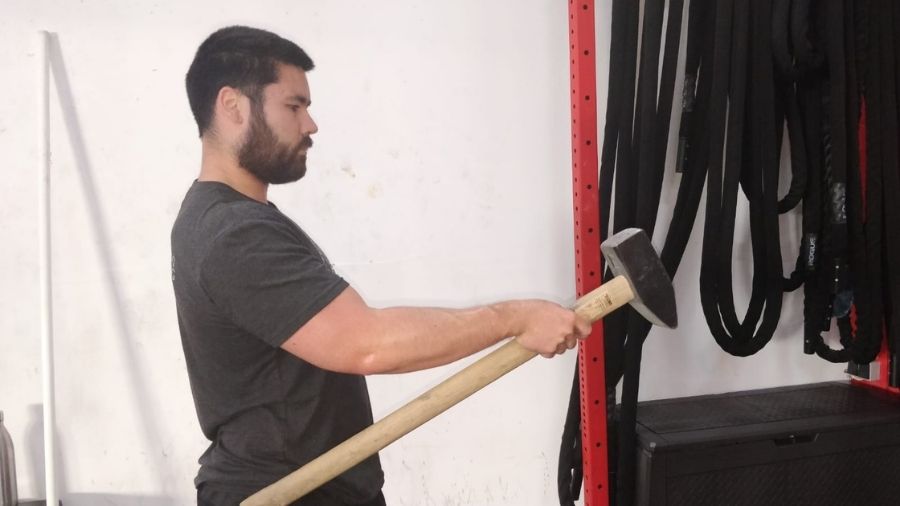
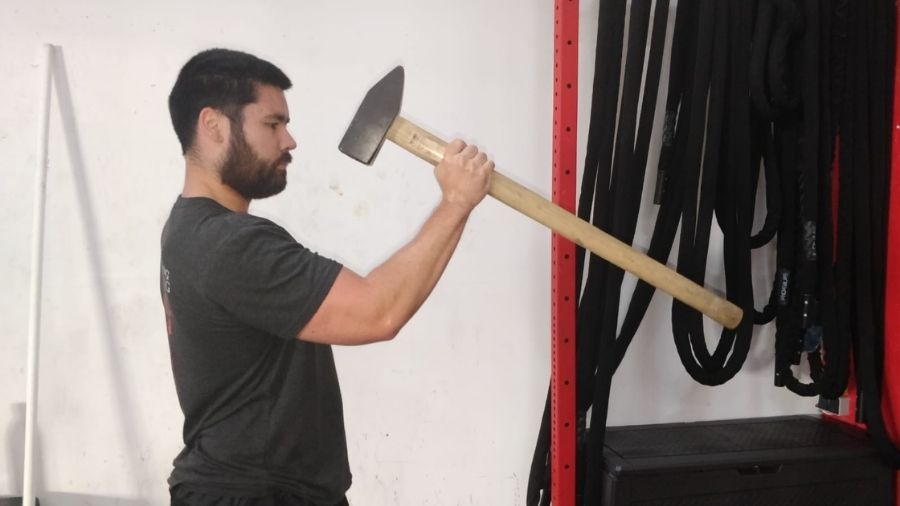
Not only will this pack meat on your forearms, but it also makes a pretty cool party trick. That's if the parties you attend have sledgehammers lying around. But I digress. It's a cool feat of strength that non-lifters will never be able to replicate (unless they are manual laborers then you've got your work cut out for you).
Sledgehammers up the cool factor by 1000. But you don't have to use sledgehammers. Anything with a weighted end works. Golf clubs, baseball bats, and cricket bats all work. If you remember a little bit of physics from school, you’ll know that the longer the lever, the more force it will take to move or stop the hammer from having you call the dentist.
So, start closer to the end of the hammer than you think! With your arm in front and slightly bent, point your hammer forward like you are knighting someone (maybe only a reference Commonwealth citizens will understand?). Then, while keeping your arm in relatively the same position, bring the edge of the hammer toward your face using only your wrist.
As you get stronger, you can move your hand further away from the hammer until you are holding the very end!
Recommended sets and reps: 1-3 sets of 5-10 reps.
Hammer Pronation/Supination
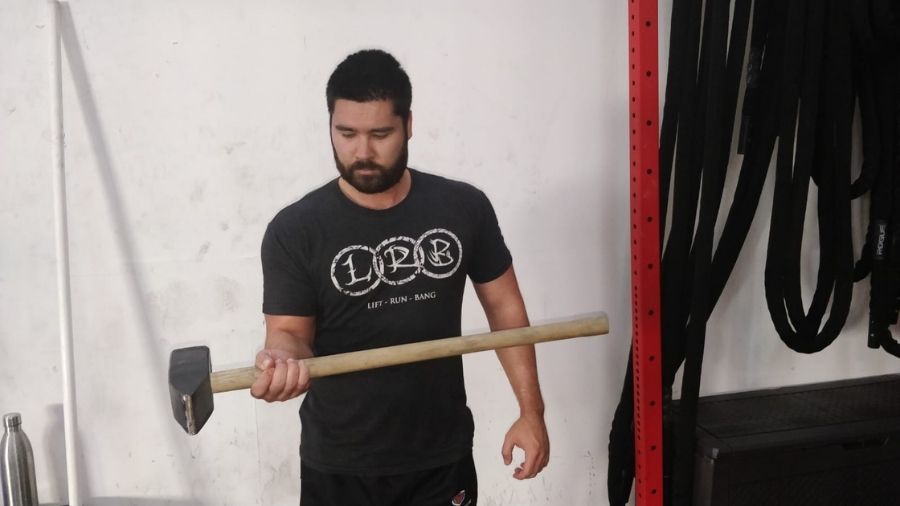
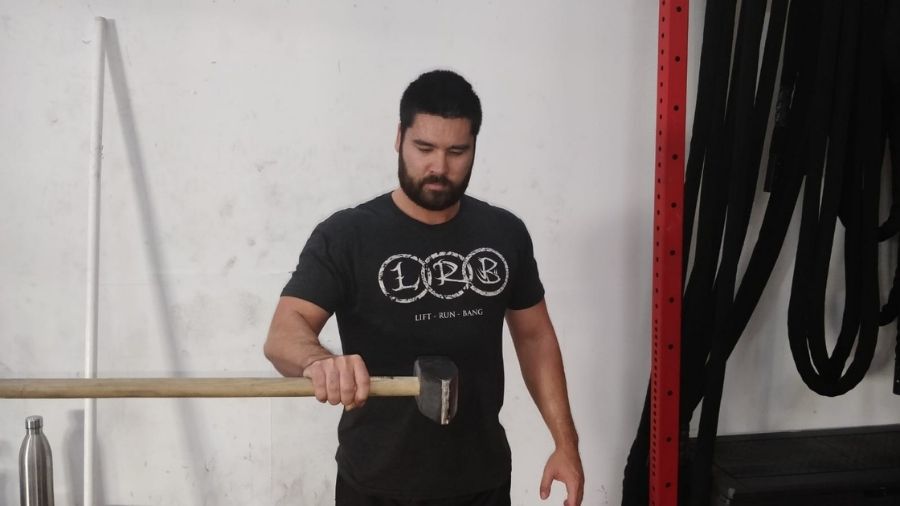
So, you don’t go to the hardware store to buy a new sledgehammer for one exercise, here is another great use of the sledgehammer. Pronation and supination. The nice thing about this exercise is that it acts as a mobility exercise too so you may find you'll be able to perform straight bar exercises without wrist pain when you get good at this.
Do the pronation and supination with a 90° elbow bend to maximize the recruitment of the brachioradialis. We also get activation of many other deep forearm muscles that aid in pronation and supination you won’t target with simple flexion and extension.
Recommended sets and reps: 1-3 sets of 5-10 reps.
Kroc Rows
Made famous by Janae Kroczaleski (formerly Matt Kroczaleski), the Kroc row differs from the 1-arm dumbbell row in that you use very heavy loads for high reps with a little bit of body English. The exercise was created because Kroczaleski had maxed out the available dumbbells for rows. So instead of increasing the load, he would increase the number of reps aiming for personal records.
For the exercise to be considered a Kroc row, it must be reps of 20 or more in one set. And it must be with a weight that you can’t get 20 strict reps with. The idea is that you use a little body English so you can handle heavier loads.
Because of how heavy these are, do these standing while supporting yourself with your free arm. Your grip will be fried after a set of these (make sure to not use straps). It’s almost like doing cardio!
Recommended sets and reps: 1-2 sets of 20-30+ reps.
Dead Hangs
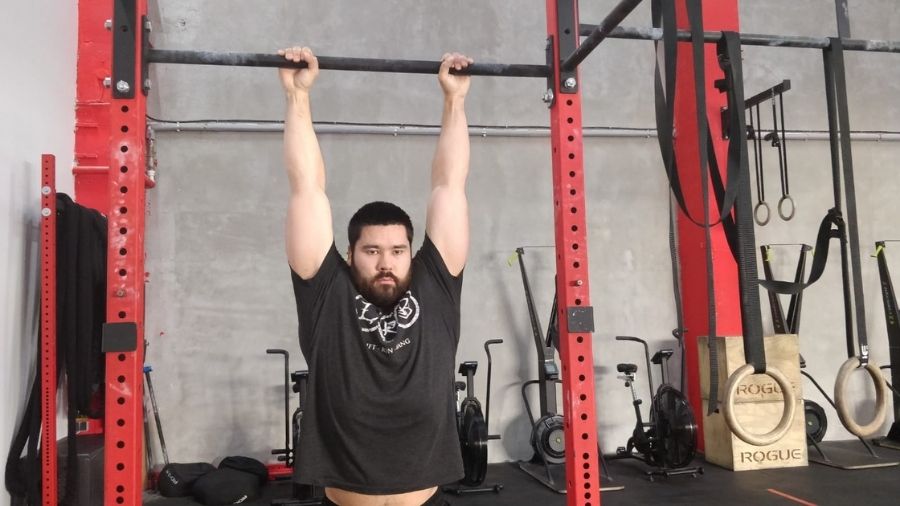
The most basic of grip exercises to build your forearms. Hang from a bar! You can make these more difficult by adding Fat Gripz or you can hang off various objects such as thick tree branches.
The additional bonus is that you’ll traction your spine relieving any lower back issues you may be feeling while opening your shoulders.
Recommended sets and reps: 1-3 sets of 30-60 seconds.
How To Get Bigger Forearms Without Weights
Not everyone has access to gym equipment. Maybe you train at home without any equipment. Or you are stuck in a hotel as you travel around the world. I’ve got you covered with some little-known forearm exercises you can do without any weights whatsoever to build crazy muscle and strength.
Doorway Hang
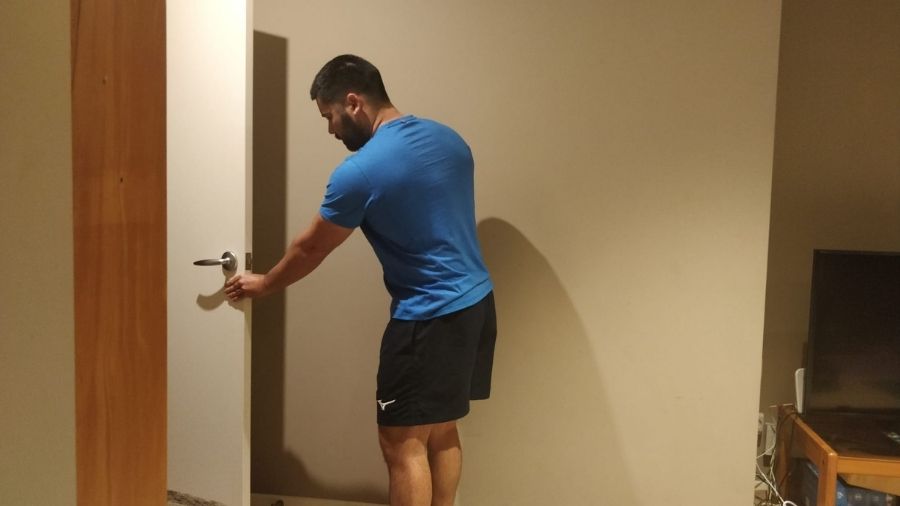
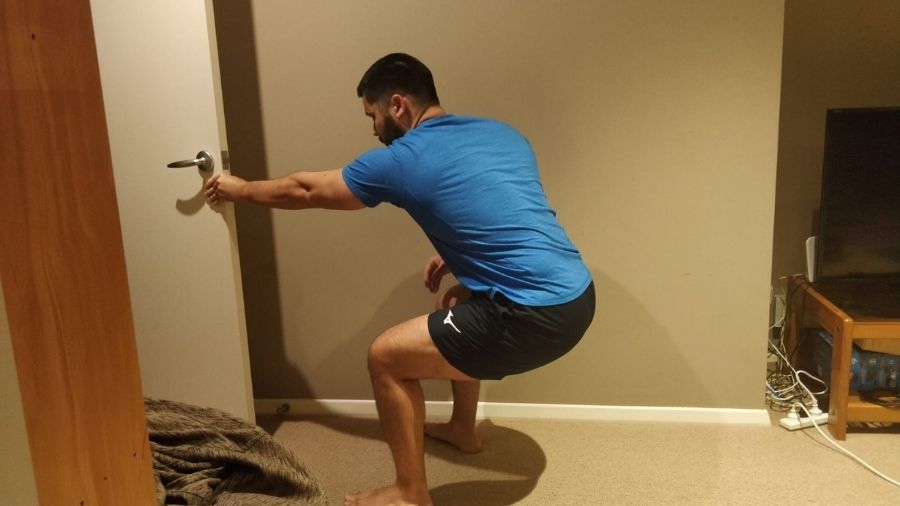
Who knew your door could be the apparatus to strengthen your forearms? The doorway hang will smash your pinch grip so your fingers and thumb will be on fire.
For this, face your open door from the side (so not either side of the door but where it closes). Grab the door with your fingers and thumb at approximately waist height. Once you have a firm grasp, start to sit down and back so you are sitting on your heels.
Want to level up the difficulty? Start to remove fingers until you are holding yourself with just your thumb and first finger.
Recommended sets and reps: 1-3 sets of 20-60 seconds.
Book Finger Flexion
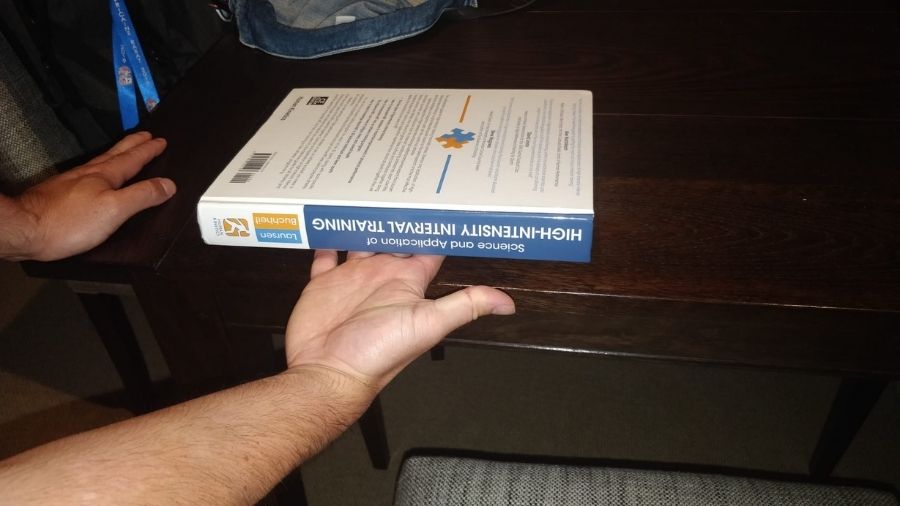
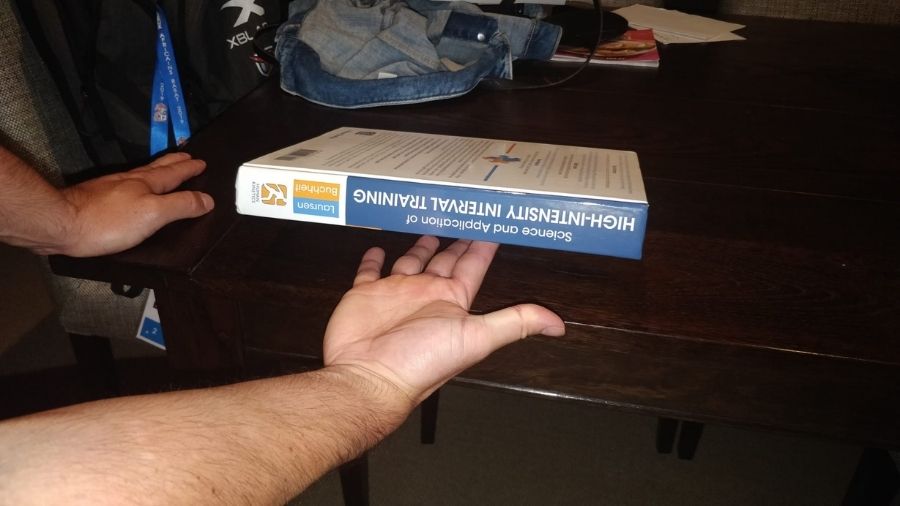
It is near impossible to train each finger in isolation when using weights as part of your forearm training. Turns out, books don’t just make you smart. They also help you get massive forearms and strong fingers. Who knew?
Find a decent-sized book. Hardback books work best. Place your fingers, palm side up, on the edge of a table with the knuckles just off the edge. Place a book on top of the fingers without your thumb. Start by performing reps with individual fingers.
You will notice your smaller fingers will struggle. That is perfectly normal and fine. As long as you are feeling the tension and moving the book slightly, you are making progress.
Once you are comfortable performing reps with individual fingers, add your thumb under the book. Now raise the book with the fingers and thumb one after in a manner you would play the piano.
Recommended sets and reps: 2-4 sets of 10-20 reps.
Book Finger Extension
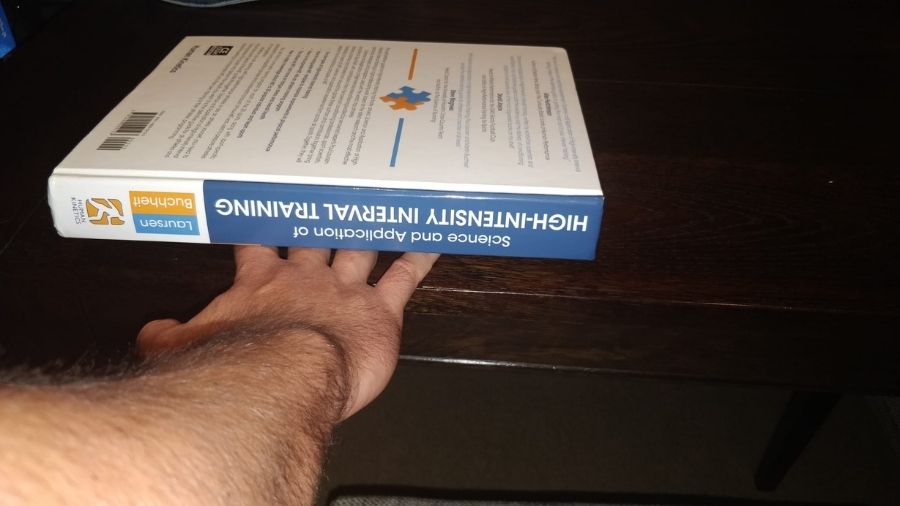
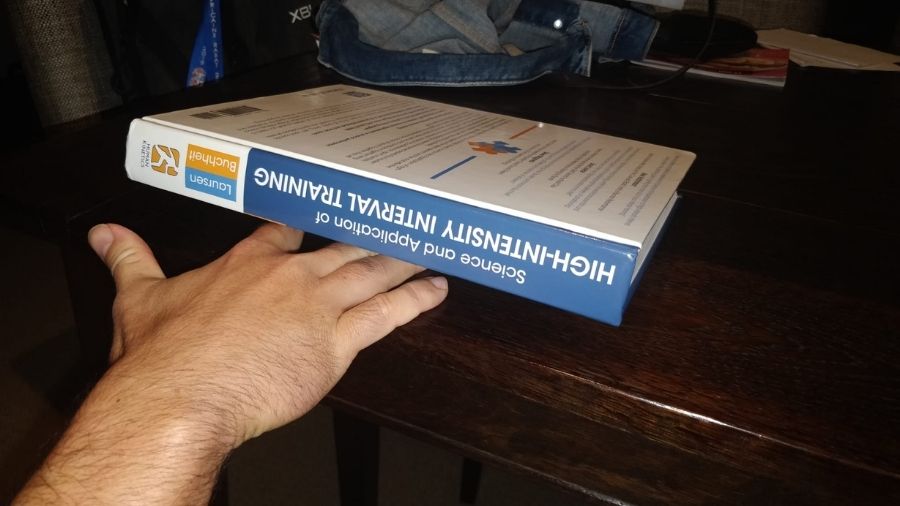
Now the opposite movement for the fingers. These are hard! Now you will turn the palm down. You will find you are much weaker during this exercise compared to the previous one. However, you will feel from the middle finger to the pinky finger the tension in the thumb as you raise these fingers.
That is fine, and you may need to push the thumb into the table to facilitate the smaller fingers lifting the book. Again, start with individual finger lifts and progress to the continuous piano style exercise.
Recommended sets and reps: 2-4 sets of 10-20 reps.
Pan Pronation/Supination
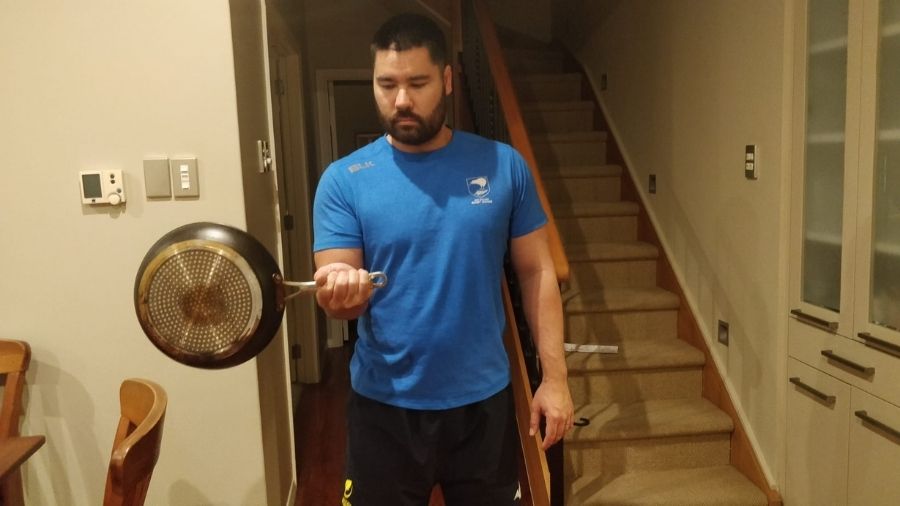
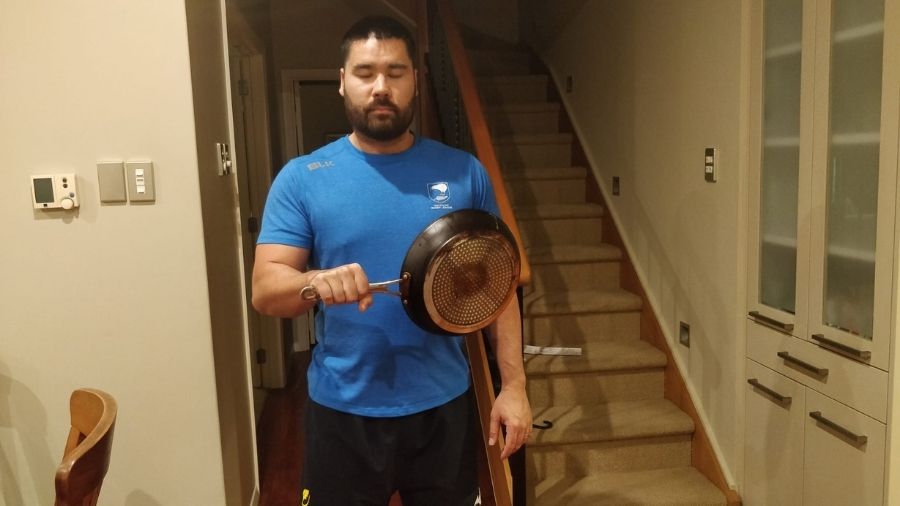
Your kitchen has all the weights you need to build forearm size. Have a heavy pan? Then you have a piece of equipment to do pronation and supination with. Perform these how you would with a sledgehammer.
Elbow at 90° and turning the pan from side to side.
Recommended sets and reps: 1-3 sets of 5-10 reps.
Rubber Band Finger Extensions
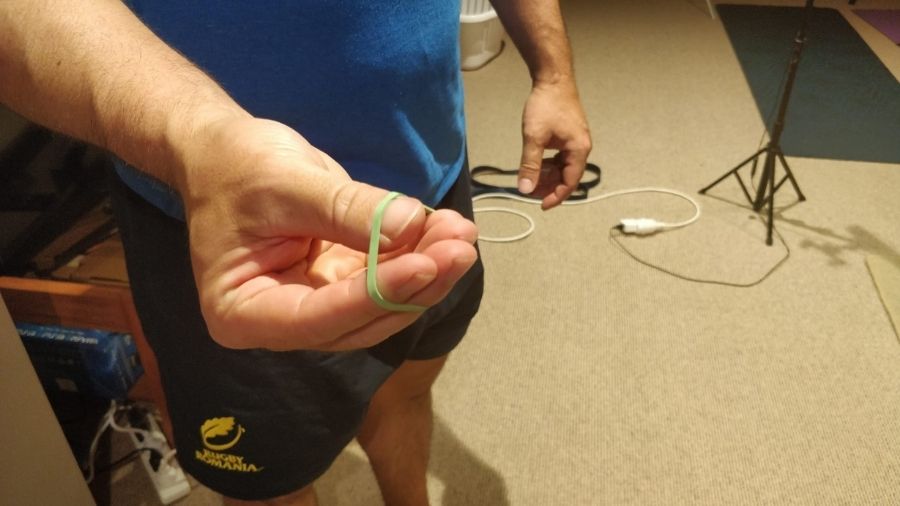
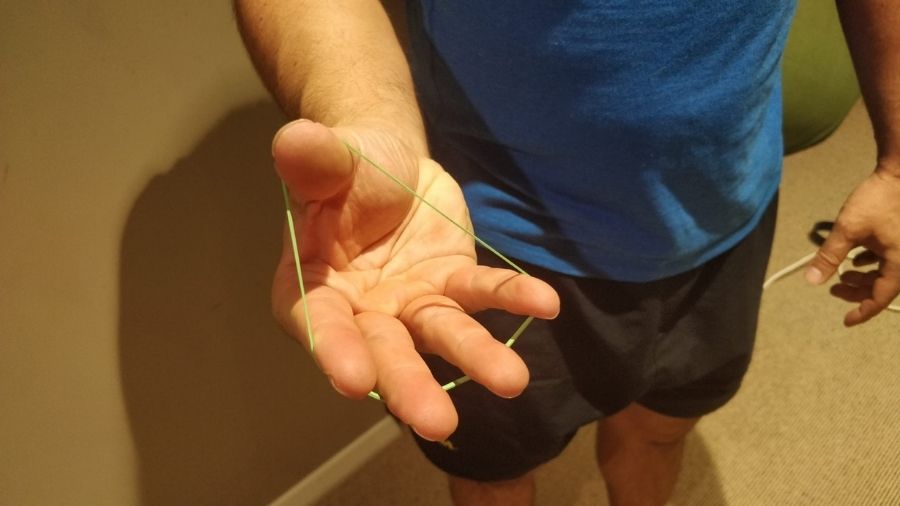
Those who have elbow pain will love this exercise. It often corrects overuse injuries like tennis elbow. Often, it’s a weakness of the extensors and overuse of the flexors. The finger extension exercise is the only exercise that will purely target the extensors.
For that reason, do these as often as possible. Thick rubber bands that you get from broccoli make the best rubber bands for this exercise. Otherwise, IronMind has made bands specifically for this use.
Simply place the band around your fingers and open your hand.
Recommended sets and reps: 2-4 sets of 20-30 reps.
Forearm Workout For Mass
Now it’s time to piece these exercises together to grow those forearms! It’s important to note that you shouldn’t replace all of the exercises you perform with grip variations. For example, changing deadlifts and rows to a fat bar variation.
If you do decide to perform fat bar variations of exercises, perform the regular bar variation first and finish with the fat variation. These rules do not apply for pressing and I'll often use fat bar pushing variations as the main movement.
So, this 3-day workout will be an add-on to your normal workout routine.
Day 1
Exercise | Set/Rep |
|---|---|
A1) Farmers Walk | 2 x 40-50 m |
B1) Dumbbell Wrist Curl | 2 x 15-20 |
C1) Dumbbell Wrist Extension | 2 x 15-20 |
Day 2
Exercise | Set/Rep |
|---|---|
A1) Towel Pull-Up | 3 x Max Reps |
B1) Hammer Pronation/Supination | 2 x 12 |
C1) Plate Pinch | 2 x 30 sec |
D1) Rubber Band Finger Extension | 3 x 25 |
Day 3
Exercise | Set/Rep |
|---|---|
A1) Fat Gripz Deadlift | 1 x Max, 1 x 10 @70% of max |
B1) Reverse Curl | 3 x 8 |
C1) Gripper | 3 x 5 |
Forearm Workout With Dumbbells
If you only have dumbbells available at home, here is a dumbbell only workout you can do to blow your forearms up.
Day 1
Exercise | Set/Rep |
|---|---|
A1) Wrist Extension | 3 x 15-20 |
B1) Wrist Curl | 3 x 15-20 |
C1) Rubber Band Finger Extension | 3 x 25 |
Day 2
Exercise | Set/Rep |
|---|---|
A1) Reverse Curl | 3 x 10-12 |
B1) Farmers Walk | 1 x Max Distance |
Day 3
Exercise | Set/Rep |
|---|---|
A1) Wrist Extension | 3 x 15-20 |
B1) Wrist Curl | 3 x 15-20 |
C1) Thor’s Hammer (if you have adjustable DB’s where you can remove one side) | 2 x 10 |
Forearm Workout Without Weights At Home
Have no weights at all? No problem. Here is a bodyweight workout for massive forearms with no equipment that can be used as an add-on to your normal routine.
Day 1
Exercise | Set/Rep |
|---|---|
A1) Doorway Hang | 3 x 30sec |
B1) Book Finger Flexion | 2 x 10/finger |
C1) Book Finger Extension | 2 x 10/finger |
Day 2
Exercise | Set/Rep |
|---|---|
A1) Doorway Hang | 5 x 20sec |
B1) Pan Pronation/Supination | 3 x 20 |
Bodyweight Only Forearm Workout
If you love your calisthenics, then give this forearm workout a try that only needs your bodyweight!
Day 1
Exercise | Set/Rep |
|---|---|
A1) Fat Gripz Dead Hang | 2 x Max Time |
B1) Book Finger Flexion | 2 x 10/finger |
C1) Book Finger Extension | 2 x 10/finger |
Day 2
Exercise | Set/Rep |
|---|---|
A1) Towel Pull-Up | 3 x Max Reps |
B1) Doorway Hang | 2 x 20 sec |
Day 3
Exercise | Set/Rep |
|---|---|
A1) Dead Hang | 2 x Max Reps |
B1) Rubber Band Finger Extension | 3 x 25 |
References
1. Boland, M. R., Spigelman, T., & Uhl, T. L. (2008). The function of brachioradialis. The Journal of hand surgery, 33(10), 1853-1859.
2. Maeo, S., Huang, M., Wu, Y., Sakurai, H., Kusagawa, Y., Sugiyama, T., ... & Isaka, T. (2021). Greater hamstrings muscle hypertrophy but similar damage protection after training at long versus short muscle lengths. Medicine and science in sports and exercise, 53(4), 825.
3. Schoenfeld, B. J. (2010). The mechanisms of muscle hypertrophy and their application to resistance training. The Journal of Strength & Conditioning Research, 24(10), 2857-2872.
4. Abe, T., & Loenneke, J. P. (2015). Handgrip strength dominance is associated with difference in forearm muscle size. Journal of physical therapy science, 27(7), 2147-2149.
5. Abe, T., Thiebaud, R. S., Loenneke, J. P., Ogawa, M., & Mitsukawa, N. (2014). Association between forearm muscle thickness and age-related loss of skeletal muscle mass, handgrip and knee extension strength and walking performance in old men and women: a pilot study. Ultrasound in medicine & biology, 40(9), 2069-2075.
6. Gale, C. R., Martyn, C. N., Cooper, C., & Sayer, A. A. (2007). Grip strength, body composition, and mortality. International journal of epidemiology, 36(1), 228-235.
7. Szymanski, D. J., Szymanski, J. M., Molloy, J. M., & Pascoe, D. D. (2004). Effect of 12 weeks of wrist and forearm training on high school baseball players. The Journal of Strength & Conditioning Research, 18(3), 432-440.
8. Murray, W. M., Delp, S. L., & Buchanan, T. S. (1995). Variation of muscle moment arms with elbow and forearm position. Journal of biomechanics, 28(5), 513-525.
9. Burd, N. A., Andrews, R. J., West, D. W., Little, J. P., Cochran, A. J., Hector, A. J., ... & Phillips, S. M. (2012). Muscle time under tension during resistance exercise stimulates differential muscle protein sub‐fractional synthetic responses in men. The Journal of physiology, 590(2), 351-362.
10. Krings, B. M., Shepherd, B. D., Swain, J. C., Turner, A. J., Chander, H., Waldman, H. S., ... & Smith, J. W. (2021). Impact of fat grip attachments on muscular strength and neuromuscular activation during resistance exercise. The Journal of Strength & Conditioning Research, 35, S152-S157.
11. Kruger, M. J. (1999). Effects of thick-bar resistance training on strength measures in experienced weightlifters (Doctoral dissertation).
12. Boyes, N. G., Yee, P., Lanovaz, J. L., & Farthing, J. P. (2017). Cross‐education after high‐frequency versus low‐frequency volume‐matched handgrip training. Muscle & nerve, 56(4), 689-695.
